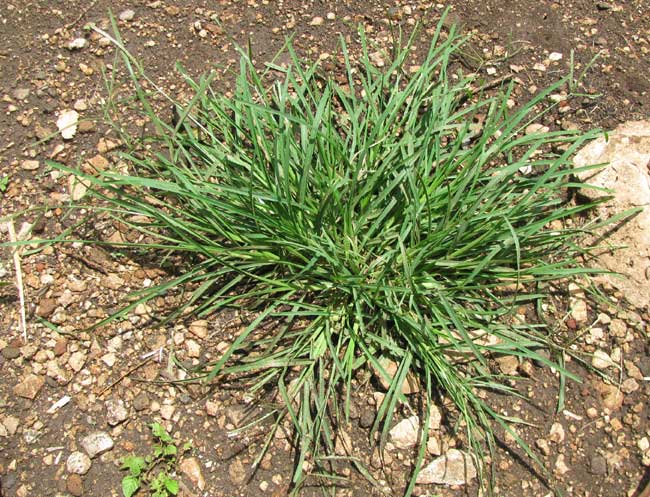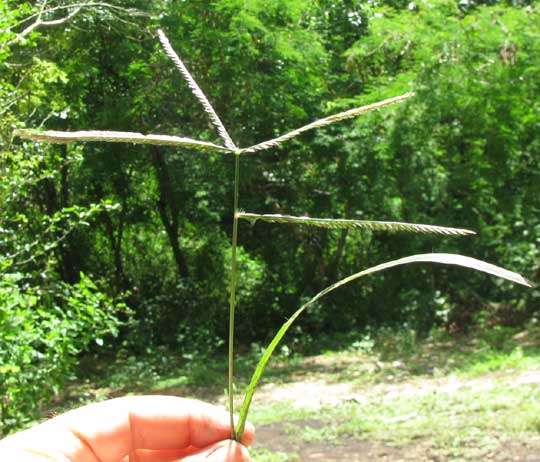Excerpts from Jim Conrad's
Naturalist Newsletter

from the August 8, 2010 Newsletter issued from Hacienda Chichen Resort beside Chichén Itzá Ruins, central Yucatán, MÉXICO; limestone bedrock, elevation ~39m (~128ft), ~N20.676°, ~W88.569°
GOOSEGRASS
There's a tough little bunch of grass right outside the hut's door which I know is tough because usually when I leave the hut I step on it, yet the plant remains in pretty good shape. You can see it above. Notice flowering heads at the tuft's periphery. A close-up of one of those heads is to be seen below:

So, this is one of those grasses that arrays its flowers along one side of its flower-head branches, and the flower-head branches are clustered toward the top of a stiff stem holding the flower-head above the leaves. Crabgrass is the best known grass doing this, plus Bermuda Grass does it, and a few other grass types as well. What we have here is Goosegrass, ELEUSINE INDICA, a native of the Old World, but flourishing in hot and warm places worldwide, including much of the US, to about 50 degrees latitude.
Goosegrass differs from crabgrass and Bermuda Grass in that in Goosegrass each "spikelet" contains two or more "florets," not just one. If you don't know these terms you can see how they relate in a bluegrass flower at www.backyardnature.net/gr_flort.jpg.

Above you see two views of a Goosegrass's flower-head branch, or rachilla. The shot at the left shows the branch from above, and you can see how flowers are densely packed below the rachilla. The shot at the right is shot from below. The oval, brownish things are anthers from which pollen is released.
You just have to admire Goosegrass's survivability. It's an important weed in cultivated crops, lawns, and golf courses, where its low-growing stems set seed even when the mower is set very low. Some populations have even evolved resistance to certain herbicides.
Another trick Goosegrass uses to survive is that during photosynthesis it uses the C4 Carbon Fixation Pathway instead of the less efficient C3 pathways. C4 plants have a competitive advantage over plants using C3 carbon fixation pathways under conditions of drought, high temperatures, and limited nitrogen or CO2 access. Only about 1% of the Earth's known plant species use the C4 Pathway, which is assumed to have evolved more recently than the C3 pathways. If you want to see the C4 Pathway's chemistry, it's covered at https://en.wikipedia.org/wiki/C4_carbon_fixation.